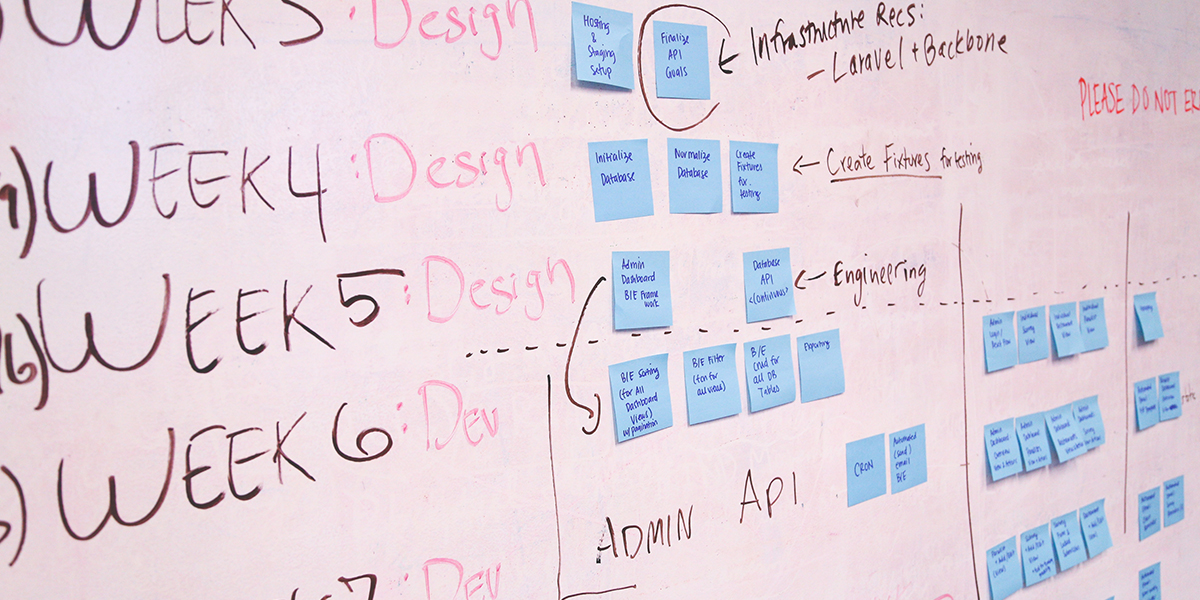Thanks to the introduction of Agile to the industry more than a decade ago, since then, it has become the new standard for software projects. Thanks to the benefits this approach can offer, agile has become much more than a buzzword. In fact, a 2015 survey of IT and development professionals shows that agile methods are now the norm – two-thirds of teams identified their processes as “pure agile” or “leaning toward agile,” with only a mere 2 percent still solely utilizing pure waterfall strategies.
We believe one of the most attractive advantages of agile is its ability to increase productivity during development. But how, exactly, is this possible? Today, we’ll take a closer look at the agile method, as well as the benefits it can offer your team.
Agile methodology: An overview
Agile software development was born out of a need for flexibility in software development, particularly when it came to the delivery of finished products. In an agile strategy, teams seek to utilize simple code and test often throughout the process. This enables the team to create functional portions of the overall finished software, with the ability to release these parts once they’re ready. In this way, our clients can see and experience each part, and the team can introduce new capabilities and features to the software as development continues.
“Agile is a time boxed, iterative approach to software delivery that builds software incrementally from the start of the project, instead of trying to deliver it all at once near the end,” Agile In a Nutshell explained.
“It works by breaking projects down into little bits of user functionality called user stories, prioritizing them, and then continually delivering them in short two-week cycles call iterations.”
This comes as an alternative to waterfall development, where the final product is delivered at the end of the development process. With agile, we can leverage the opinions and feedback of our client as well as potential users, adjusting items as necessary to create the best product possible.

Agile: Boosting productivity through key development advantages
This departure from waterfall comes with several key advantages, each of which helps contribute to significantly increased productivity across the board.
Predictable schedule reduces risk:
Because the development process is broken down into smaller scrum cycles, teams are able to work more predictably. This, combined with the frequent testing throughout the process, helps to lower the overall risk, particularly when it comes to software bugs or coding mistakes. These can be spotted and corrected more easily during an agile approach, preventing the team from having to waste time fixing these issues later on down the line.
Continuous integration:
Agile methods also support continuous interactions between team members as well as the client, with the ability to apply feedback as the software is being created. For this reason, it’s important that the customer is able to play an active role in the process, helping to ensure that the application aligns with their vision throughout development as new user stories are completed. With the development team and the client on the same page, productivity can escalate as the customer’s expectations are met and exceeded.
Increased collaboration:
In addition to the client playing a more central role in the process, agile development also helps to boost collaboration among members of the development and testing teams. Because a scrum not only includes development of a new user story as well as testing, both developers and QA testers work closer to ensure functionality and quality.
Beneficial for global teams:
Agile development places a high priority on a collaborative development culture, helping to unite even the most geographically dispersed teams. Frequent meetings supported by technology including cloud-based, real-time development and testing tools can ensure that team members remain on the same page and are productively collaborating with one another.
Lower failure rate:
Studies have also shown that agile is typically more successful than waterfall development projects. According to research from the Standish Group, where agile projects fail 9 percent of the time, waterfall projects see a 29 percent failure rate. What’s more, agile initiatives showed a 42 percent success rate, whereas waterfall processes only achieved 14 percent.
“The agile process is the universal remedy for software development project failure,” The Standish Group noted in its 2011 report. “Software applications developed through the agile process have three times the success rate of the traditional waterfall method and a much lower percentage of time and cost overruns.”
Introducing the client into the methodology
At Making Sense we had an interesting experience with our client Eveo, a digital agency located in San Francisco. As the project developed, the client was very happy with the ongoing results and very interested in the way we worked as a team. They wanted to implement Agile beyond our Project, and invited us to provide training. Jennifer Greyling, Project Manager at Making Sense was in charge of introducing it to the Eveo team. Jennifer traveled and taught in 5 training sessions and workshops project management, agile project organization, scoping, and sprint process. The attendees of this training were executives and leaders from the marketing, creative, technology and project management areas. Now, the Agile methodology is being implemented and we are providing 3 months of oversight.
Overall, it’s clear that agile development has numerous advantages to offer today’s development and QA teams, especially in terms of increased productivity. Agile methods help bring team members and clients together in a collaborative fashion, ensuring the creation of a high-quality product that can be brought to market considerably quickly.
To find out more about how agile methodologies are leveraged in real-world development, contact the experts at Making Sense today.
